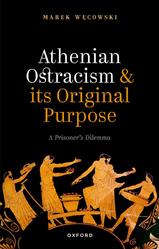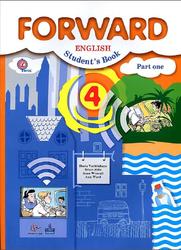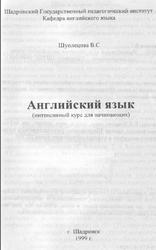This book deals entirely with English as a foreign language (EFL). It is for intermediate students who are working with a teacher or working on their own. It covers every important area of the English language. If you look at the Contents pages, you will find sixteen major areas which form the basis of English grammar. This book is based on the Longman English Grammar and the grammatical information in it is all drawn from this work. Longman English Grammar Practice has been designed to stand on its own. Students who require further grammatical information can refer to the Longman English Grammar.
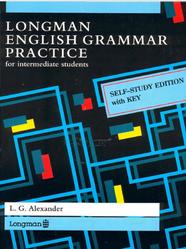
Negative questions: ‘Can’t you ...?’.
Rewrite these negative questions using short forms.
1 Am I not too early?
2 Is she not very well?
3 Are those answers not wrong?
4 Is he not waiting for you?
5 Are they not living in Canada?
6 Was she not a famous actress?
7 Were you not at my old school?
8 Are you not going to be there?
9 Can you not walk faster?
10 Could you not do this for me?
11 Do you not like fish?
12 Does she not go to church?
13 Did he not enjoy the film?
14 Have you not finished yet?
15 Has he not gone yet?
16 Have I not been invited?
17 Should you not let him know?
18 Am I not invited?
Contents.
To the student.
1 The sentence.
1.1 Sentence wo rd order.
1.2 The simple sentence: verbs with and without objects.
1.3 The simple sentence: direct and indirect objects.
1.4 The compound sentence.
1.5 The complex sentence: noun clauses.
1.6 The complex sentence: relative pronouns and clauses.
1.7 The complex sentence: ‘whose’; defining/non-defining clauses.
1.8 The complex sentence: time, place, manner.
1.9 The complex sentence: reason and contrast.
1.10 The complex sentence: purpose, result and comparison.
1.11 The complex sentence: present participle constructions.
1.12 The complex sentence: perfect/past participle constructions.
2 Nouns.
2.1 One-word nouns.
2.2 Compound nouns.
2.3 Countable and uncountable nouns (1).
2.4 Countable and uncountable nouns (2).
2.5 Number (singular and plural) (1).
2.6 Number (singular and plural) (2).
2.7 Gender.
2.8 The genitive.
3 Articles.
3.1 The indefinite article: ‘a/an’ (1).
3.2 The indefinite article: ‘a/an’ (2).
3.3 The definite article: ‘the’ (1).
3.4 The definite article: ‘the’ (2).
3.5 The zero article (1).
3.6 The zero article (2).
4 Pronouns.
4.1 Personal pronouns.
4.2 ‘One’.
4.3 ‘It’ and ‘one/some/any/none’.
4.4 Possessive adjectives and possessive pronouns (‘my/mine’).
4.5 Reflexive pronouns (‘myself’).
4.6 Demonstrative adjs/prons (‘this’); ‘some/any/no’ compounds (‘someone’).
5 Quantity.
5.1 Quantifiers + countable and uncountable nouns.
5.2 General and specific references to quantity.
5.3 Uses of ‘some’, ‘any’, ‘no’ and ‘none’.
5.4 ‘Much’, ‘many’, ‘a lot of, ‘(a) few’, ‘(a) little’, ‘fewer’, ‘less’.
5.5 ‘Both’ and ‘all’.
5.6 ‘All (the)’, ‘(а/the) whole’, ‘each’ and ‘every’.
5.7 ‘Another’, ‘(the) other(s)’, ‘either’, ‘neither’, ‘each (one of)’.
6 Adjectives.
6.1 Formation of adjectives.
6.2 Position of adjectives.
6.3 Adjectives that behave like nouns; '-ed/-ing’ endings.
6.4 Adjectives after ‘be’, ‘seem’, etc.; word order of adjectives.
6.5 The comparison of adjectives.
7 Adverbs.
7.1 Adverbs of manner.
7.2 Adverbs of time.
7.3 Adverbial phrases of duration.
7.4 Adverbs of frequency.
7.5 Adverbs of degree.
7.6 Intensifiers.
7.7 Focus adverbs.
7.8 Viewpoint adverbs, connecting adverbs and inversion.
8 Prepositions, adverb particles and phrasal verbs.
8.1 Prepositions, adverb particles and conjunctions.
8.2 Prepositions of movement and position; prepositions of time.
8.3 Particular prepositions, particles: contrasts (1).
8.4 Particular prepositions, particles: contrasts (2).
8.5 Particular prepositions, particles: contrasts (3).
8.6 Phrasal verbs: Type 1, verb + preposition (transitive).
8.7 Phrasal verbs: Type 2, verb + particle (transitive).
8.8 Phrasal verbs: Type 3, verb + particle (intransitive).
Type 4, verb + particle + preposition (transitive).
9 Verbs, verb tenses, imperatives.
9.1 The simple present and present progressive tenses (1).
9.2 The simple present and present progressive tenses (2).
9.3 The simple past tense.
9.4 The simple past and past progressive tenses.
9.5 The simple present perfect and present perfect progressive.
9.6 The simple past perfect and past perfect progressive tenses.
9.7 The simple future tense.
9.8 The simple future, the future progressive, the future perfect.
9.9 ‘Going to’ and other ways of expressing the future.
9.10 The imperative.
10 Be, Have, Do.
10.1 ‘Be’ as a full verb (1).
10.2 ‘Be’ as a full verb (2).
10.3 ‘There’ + ‘be’.
10.4 Verbs related in meaning to be’.
10.5 ‘Have’ as a full verb = ‘possess’; ‘have got' = ‘possess’.
10.6 ‘Have’ as a full verb meaning ‘eat’, ‘enjoy’, etc.
10.7 ‘Do’ as a full verb.
11 Modal auxiliaries and related verbs.
11.1 The two uses of modal verbs.
11.2 Uses of modals (etc.) to express ability and inability.
11.3 Uses of modals (etc.) to express permission and prohibition.
11.4 Uses of modals (etc.) to express certainty and possibility.
11.5 Uses of modals to express deduction.
11.6 Uses of modals for offers, requests and suggestions.
11.7 Expressing wishes, etc.: ‘I wish’, ‘if only’, ‘it’s (high) time’.
11.8 Expressing preferences: ‘would rather’ and ‘would sooner’.
11.9 ‘It’s advisable ...‘lt’s necessary ...’.
11.10 ‘It isn’t advisable ...‘lt isn’t necessary ...‘lt’s forbidden’.
11.11 Modals to express habit: ‘used to’, ‘will’ and ‘would’.
11.12 Need’ and ‘dare’ as modals and as full verbs.
11.13 ‘Would/wouldn’t’; ‘that ...should’; ‘there’ + modal.
12 The passive and the causative.
12.1 General information about form.
12.2 Uses of the passive.
12.3 Form and use of the causative.
13 Questions, answers, negatives.
13.1 Yes/No questions, negative statements, Yes/No answers.
13.2 Alternative negative forms and negative questions.
13.3 Tag questions and echo tags.
13.4 Additions and responses.
13.5 Question-word questions (1): ‘Who(m)...?’, ‘What...?’.
13.6 Question-word questions (2): ‘When?’, ‘Where?’, ‘Which?’, ‘Whose?’.
13.7 Question-word questions (3): ‘Why?’, ‘How?’.
13.8 Subject-questions: ‘Who?’, ‘What?’, Which?’, ‘Whose?’.
13.9 Questions about alternatives; emphatic questions with ‘ever’.
14 Conditional sentences.
14.1 Type 1 conditionals.
14.2 Type 2 conditionals.
14.3 Type 3 conditionals.
14.4 Mixed conditionals; ‘unless/if... not’, etc.
15 Direct and indirect speech.
15.1 Direct speech.
15.2 ‘Say’, 'tell’ and ‘ask’.
15.3 Indirect statements with tense changes.
15.4 Indirect questions with tense changes.
15.5 Uses of the to-infinitive in indirect speech.
15.6 When we use indirect speech.
16 The infinitive and the ‘-ing’ form.
16.1 The bare infinitive and the to-infinitive.
16.2 The bare infinitive or the ‘-ing’ form; the to-infinitive.
16.3 Verb (+ noun/pronoun) + to-infinitive.
16.4 Adjectives and nouns + to-infinitive.
16.5 The ‘-ing’ form.
16.6 Verb + the ‘-ing’ form.
16.7 Adjectives, nouns and prepositions + ‘-ing’.
16.8 The to-infinitive or the ‘-ing’ form?.
Index.
Key.
Бесплатно скачать электронную книгу в удобном формате, смотреть и читать:
Скачать книгу Longman English grammar practice for intermediate students, Alexander L.G., 1990 - fileskachat.com, быстрое и бесплатное скачивание.
Скачать pdf
Ниже можно купить эту книгу, если она есть в продаже, и похожие книги по лучшей цене со скидкой с доставкой по всей России.Купить книги
Скачать - pdf - Яндекс.Диск.
Дата публикации:
Теги: учебник по английскому языку :: английский язык :: Alexander
Смотрите также учебники, книги и учебные материалы:
Следующие учебники и книги:
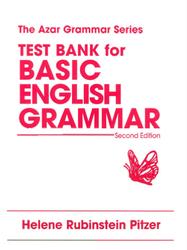 The Azar Grammar Series, Test Bank for Basic english grammar, Pitzer H.R., 1999 — Grammar with Laughter is a book which uses jokes to highlight grammatical patterns. Humorous learning materials have a number of … Книги по английскому языку
The Azar Grammar Series, Test Bank for Basic english grammar, Pitzer H.R., 1999 — Grammar with Laughter is a book which uses jokes to highlight grammatical patterns. Humorous learning materials have a number of … Книги по английскому языку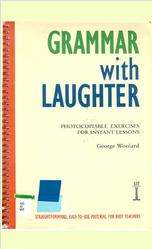 Grammar with Laughter, Woolard G., 1999 — Grammar with Laughter is a book which uses jokes to highlight grammatical patterns. Humorous learning materials have a number of … Книги по английскому языку
Grammar with Laughter, Woolard G., 1999 — Grammar with Laughter is a book which uses jokes to highlight grammatical patterns. Humorous learning materials have a number of … Книги по английскому языку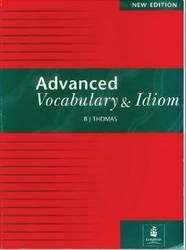 Advanced Vocabulary and Idiom, Thomas В.J., 1989 — Advanced Vocabulary and Idiom is designed to teach, test and practise the vocabulary of EFL students at a level leading … Книги по английскому языку
Advanced Vocabulary and Idiom, Thomas В.J., 1989 — Advanced Vocabulary and Idiom is designed to teach, test and practise the vocabulary of EFL students at a level leading … Книги по английскому языку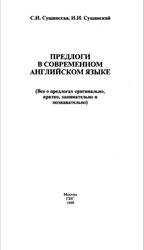 Предлоги в современном английском языке, Все о предлогах оригинально, кратко, занимательно и познавательно, Сушинская С.И., Сушинский И.И., 1999 — Настоящее пособие предназначено для лиц, углубленно изучающих английский язык, студентов, учителей, преподавателей, а также начинающих или продолжающих изучать английский язык. … Книги по английскому языку
Предлоги в современном английском языке, Все о предлогах оригинально, кратко, занимательно и познавательно, Сушинская С.И., Сушинский И.И., 1999 — Настоящее пособие предназначено для лиц, углубленно изучающих английский язык, студентов, учителей, преподавателей, а также начинающих или продолжающих изучать английский язык. … Книги по английскому языку
Предыдущие статьи:
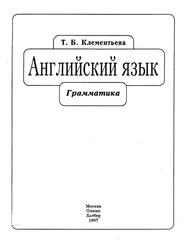 Английский язык, грамматика, Клементьева Т.Б., 1997 — Новое пособие Т. Б. Клементьевой English. Active Grammar” включает полный свод грамматических правил английского языка в виде таблиц и схем. … Книги по английскому языку
Английский язык, грамматика, Клементьева Т.Б., 1997 — Новое пособие Т. Б. Клементьевой English. Active Grammar” включает полный свод грамматических правил английского языка в виде таблиц и схем. … Книги по английскому языку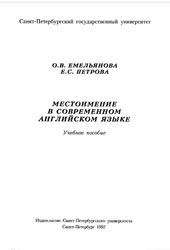 Местоимение в современном английском языке, Емельянова О.В., Петрова E.С., 1997 — Пособие по грамматике английского языка, продолжающее серию “University Grammar”, посвящено описанию всех разрядов местоимений и особенностей их функционирования в речи. … Книги по английскому языку
Местоимение в современном английском языке, Емельянова О.В., Петрова E.С., 1997 — Пособие по грамматике английского языка, продолжающее серию “University Grammar”, посвящено описанию всех разрядов местоимений и особенностей их функционирования в речи. … Книги по английскому языку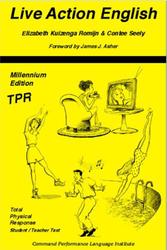 Live Action English, Romijn E.K., Seely C. — Фрагмент из книги: MAKING A TABLE. 1. You re going to make a table. 2. Choose a nice board. 3. … Книги по английскому языку
Live Action English, Romijn E.K., Seely C. — Фрагмент из книги: MAKING A TABLE. 1. You re going to make a table. 2. Choose a nice board. 3. … Книги по английскому языку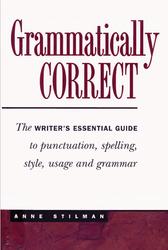 Grammatically Correct, The Writer’s Essential Guide to Punctuation, Spelling, Style, Usage and Grammar, Stilman A., 1997 — This book is not as comprehensive as some of the others out there because I have chosen to concentrate on … Книги по английскому языку
Grammatically Correct, The Writer’s Essential Guide to Punctuation, Spelling, Style, Usage and Grammar, Stilman A., 1997 — This book is not as comprehensive as some of the others out there because I have chosen to concentrate on … Книги по английскому языку

